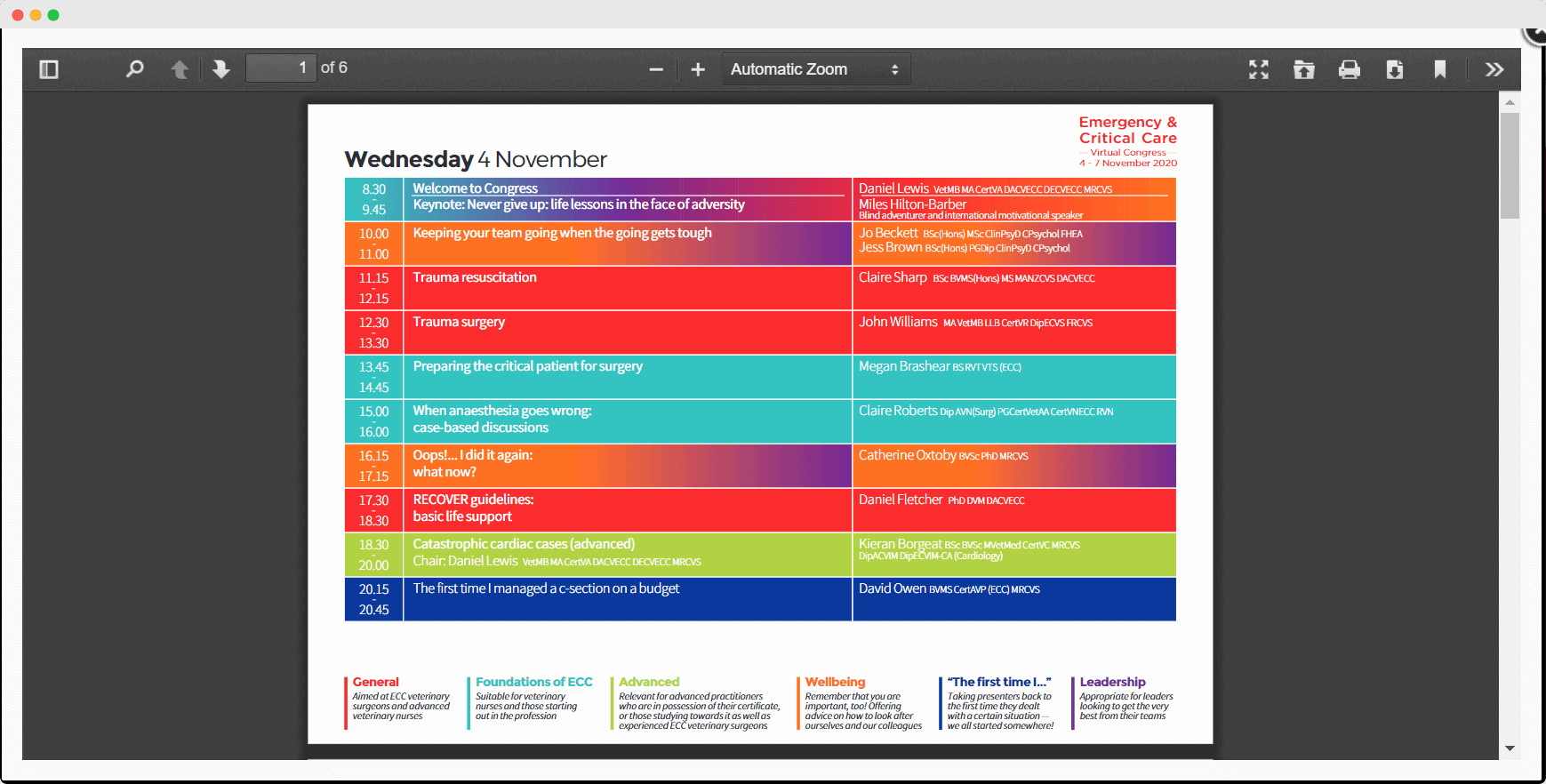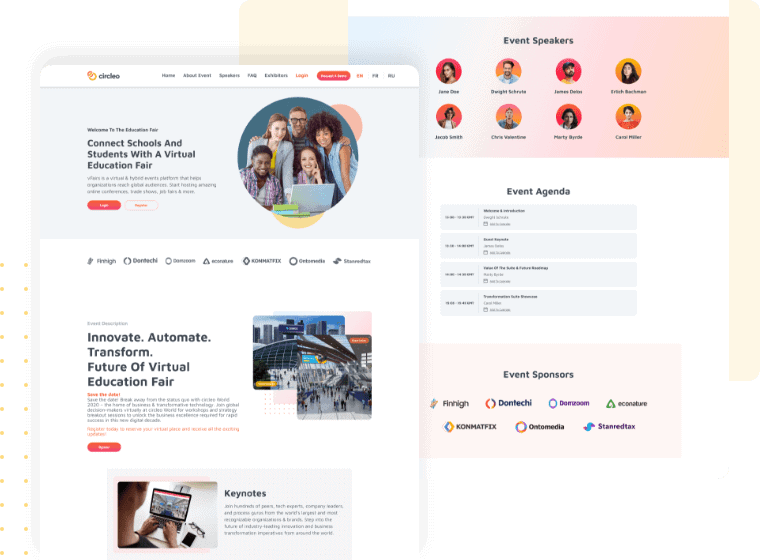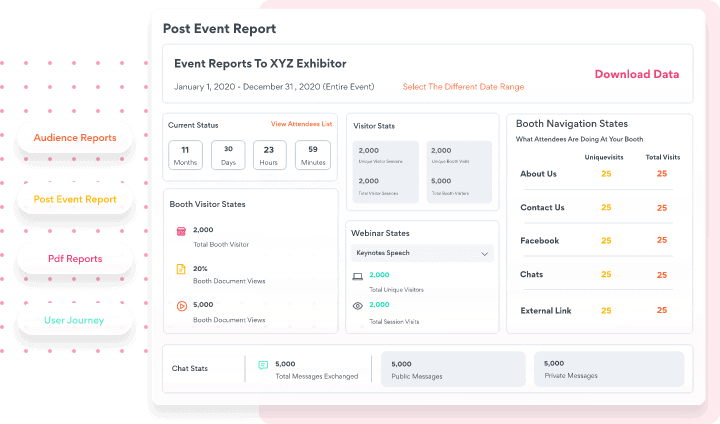The events industry has been through a monumental transformation since the start of the pandemic. Event planners have had to pivot from in-person events to virtual events almost overnight. However, now with a new horizon, hybrid events are the future of events. Learning how to plan hybrid events is half the battle won! So let’s get started with it.
To help you with that we have designed a detailed hybrid event planner. This hybrid event planner will hold your hand as you host your own event.
What is a Hybrid Event Planner?
Just as you would plan your physical event, you would plan hybrid events. This includes making an exhaustive list of tasks, and assigning responsibilities and due dates. With so much to be sorted, this hybrid events planner helps you:
- consolidate all planning and execution details in one document
- minimize any chances of losing precious information
- track due dates, responsibilities and status of each activity
- stay on course with your planning and execution of each item
You can create a planner, or use the one we have created for you before the event starts, outlining each aspect of the event. As previously discussed, hybrid event planners promise to make your life easy.
Moving on to the vFairs hybrid event planner itself, let’s see how it takes you through the entire planning process. The sections have been divided according to the event phases. Majorly before and after the event.
Diving right in.
Before The Event
Fine-Tune Initial Details
Identify the following details to set the right direction as you plan hybrid events.
- Event goals
- Target KPIs
- Target Audience
- Event Dates
- Total Expected Budget

Put The Event Agenda Together
List down all the activities you want to schedule when you begin to plan hybrid events for your organization. These activities must reflect your event goals and should help you achieve them.

Define Target Audience
When you plan hybrid events, you will have two audiences to account for. The online audience and the live audience. You might also want to set criteria for your target audience. Particularly for the audience attending in person, since they must comply with COVID-19 regulations, you might have to take into account the restrictions of your physical venue, and how many people it can house.
Check the latest COVID-19 regulations, have flexible venue contracts in place and understand the venue’s health and safety protocols.
Set Your Budget
Assign a budget for each of your costs such as equipment, venue, virtual event speakers, food & beverage etc. This will keep you on track when finalizing vendors and platform providers.
Your hybrid event has many stakeholders including exhibitors and speakers. Collect and consolidate all their respective information in one place.
Collaborator Details
Get Exhibitors On Board
Invite your exhibitors to the hybrid event. You need answers to a few questions:
- Do they want to set up a virtual booth or a live booth?
- Have they decided to have a presence on both platforms since it is hybrid?
Get their contact details and the package they are going for. Outline all the future steps for them when it comes to setting up their booth and getting their branding and marketing collateral in order.

Structure the Sessions and Speakers
Outline the type of sessions you are hosting. It could be panel discussions, 1:1 chats, keynote sessions and much more! Decide which ones will be online only, which ones will be onsite.
After that set the session schedule, the times allotted for each session, the presenters etc. Mark out the descriptions and topics being discussed in each session as well. The more information you have in place the easier it will be to iron out details later on.
Furthermore, undoubtedly your sessions have speakers and you need their information. Connect with them, confirm availability, where they will participate from etc. You will need their bios such as the organization they work for, their designation and even a picture. This will come in handy when you create social media content to highlight your speaker lineup.
Design Details
Design the Event
You have two events to set up: the virtual event and the physical event.
For the virtual event, connect with your virtual event platform provider and put together your virtual event page. Design the landing page, the registration page, the event environment etc. Assign the tasks to team members, ensure there is a due date in place to make sure you meet your deadlines.

For the physical event, again connect with the respective event provider. You will have to book venues, arrange for refreshments, giveaways, seating and branding. Additionally, you will also need to arrange the A/V equipment. From microphones, webcams, tripods, spotlight, projectors etc.
Branding and Marketing
When it comes to branding you will need a detailed list of the collateral that is required. From roll up banners, for the physical event, banners and graphics for the online event, custom stage backdrop etc. Deciding these in advance will save you from last minute issues with printing arrangements.
Well you’re on your way to a fantastic event, but have you announced it to the world? You need to have your social media plans, email marketing campaigns in check. In case you’re doing outdoor advertising you need to make arrangements in advance for those as well.
In addition, if you have any other marketing or branding activity you can plan it out and add it to your hybrid event planner.
You also need a sound content plan for each stage of the event. You need to push out relevant content before the event, during the event and even after. This includes emails and social media activity for each stage.
After The Event
After the event you will need to consolidate reports to see how effective your hybrid event was. This will help you reflect on your strategy for future events and make necessary adjustments.
Collect event reports for online audiences which includes registration data, webinar attendance, chats initiated. View the attendee journey and see where they derived most value. Similarly collect data for your onsite event and combine with the online reports to get a holistic understanding of your event.

Final Thoughts
Organizations are coming around to the idea of hybrid events and slowly stepping into the realm. Learn to plan hybrid events, and use the vFairs Hybrid Events Planner to help you ease into the seemingly arduous task. Here are a few last pointers from us to keep in mind as you plan hybrid events in the future.
- Schedule rehearsals a day before the event with your speakers and moderators. If you’re hosting remote speakers, join via your webinar link to test out the tech.
- Send out email confirmations (for onsite attendees add in the Google map link, for virtual attendees add link to online event).
- Assign responsibilities to team members and set ETA for each task.
- Conduct sync-up meetings as often as possible, every day is recommended to keep progress in check.
Ready to Plan Your Hybrid Event?
Use vFairs Hybrid Event Planner
Download My Hybrid Event Planner

